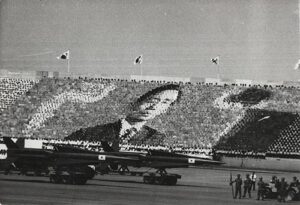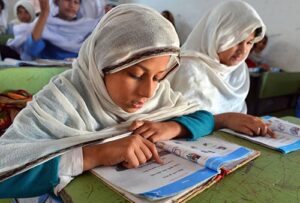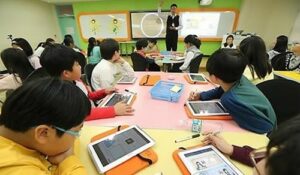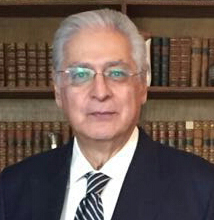In the 1960s, the World Bank advised South Korea to learn how to develop by following Pakistan. Fast forward to 2021: it is now time for Pakistan to learn how to develop from South Korea.
Pakistan was born in 1947, South Korea in 1948. Both were poor, but South Korea was the poorer of the two. By 1962, South Korea had a per capita income of $83, less than Pakistan’s $91. Today, South Korea, with its GDP of $1.6 trillion and per capita income of $31,800 has left poor Pakistan far behind with its GDP of $278 billion and its per capita income of $1,285. South Korea has a population of 50 million whereas Pakistan’s population has grown from 31 million in 1947 to 216 million today — and this, after losing half its population to Bangladesh.
Starting out with the weakest base and bereft of the wealth of natural resources, South Korea grew its per capita income by 15,000 per cent in the period 1965-2007. This growth was twice that of Taiwan, three times that of Singapore, four times that of Japan, seven times that of China, and 20 times that of India. South Korea’s exports of $200,000 in 1962, rose to $556 billion by 2021 and the number of cars rose from 30,000 in 1962 to 17 million in 2021. One of the poorest countries has become the world’s twelfth largest economy and the fifth largest exporter.

Both countries have experienced political turmoil. Korea was ruled by imperial Japan and Pakistan by the imperial British. Korea was split into two nations by the US and USSR after the Japanese were defeated in World War II. India was split into two nations as the British decided to divide and quit, and later Pakistan lost its eastern wing when Bangladesh was born.
Political leaders of both nations have not had it easy. Four of Pakistan’s national leaders have been assassinated: Liaquat Ali Khan, Zulfikar Ali Bhutto, Zia-ul-Haq and Benazir Bhutto. In the provinces, Nawab Akbar Bugti, Hayat Sherpao, Fazle Haq and Salman Taseer all met tragic ends. President Musharraf was sentenced to death and lives in Dubai, a declared absconder. Zardari and Nawaz Sharif have both faced long struggles against corruption charges. Only Imran Khan, the prime minister in power, is still safe from the dangers of high office.
Syngman Rhee became the first president of South Korea after 41 years in exile, seven years of imprisonment, and seven months of torture that left him with burnt arms and mashed fingers. Park Chung Hee, the father of Korea’s development, lost his wife in an assassination attempt and was himself assassinated later. President Chun Doo-hwan was sentenced to death but given amnesty after he apologised to the nation on television, surrendered $24 million, and went into seclusion in a Buddhist monastery as an act of repentance. President Roh Tae-woo, who followed Chun, was sentenced to 22 years imprisonment for corruption, but was later granted amnesty. The next president, Kim Young-sam, was elected on an anti-corruption platform but saw his own son imprisoned for corruption under his regime. Kim Dae-jung, the father of democracy in Korea, who reached the presidency after a long struggle in which he was twice sentenced to death and once kidnapped from a Tokyo hotel, also waged war on corruption but was let down by his three sons, who were all found guilty of fraud. The two Kims were succeeded by Roh Moo-hyun in 2003. Roh was embarrassed by the corruption of his brother, other members of his family, and his secretary. He apologized to the nation: “I have lost my moral cause…. You should abandon me.” Roh committed suicide by jumping off a cliff.
In 1958, General Ayub Khan took power in a coup. He ruled till 1969, when he transferred power to his Commander-in-Chief, General Yahya Khan. He improved the economy and created the 22 families who dominated industry in Pakistan.

In 1961, General Park Chung-hee took power in a coup. Park was withdrawn, shy, austere and intense. He ruled for 19 years, combining astounding economic success with intense political repression. He had no time for democracy, maintaining that the vote was meaningless to people suffering from starvation and despair and believing that legitimacy lay in delivering on the economy. Park was obsessed with economic growth, and it remained his priority till his death. In 19 years, Park converted a wretched, hopeless country into a strong modern state by creating his own Korea Inc — The Miracle of the Han. Where Ayub used the 22 families to build his economy, Park used the chaebols, the massive conglomerates that dominated the South Korean economy. Both followed the example of Japan which had used the Keiretsu and the Ziabatsu to promote saving and growth through an efficient group of entrepreneurs that they could rely on.

After Ayub, Bhutto came to power as the country split and Bangladesh was born. He quickly set about reversing Ayub’s policies, with his socialism, nationalisation of big companies, and then small companies. He changed the system of education and the method of government as personalised rule replaced rule by institutions. Pakistan changed its direction, lost its momentum, and went into decline.
Over the 19 years of his rule, Park had enough time to consolidate the take-off of the economy. His successor, General Chun, continued with Park’s policies. As a consequence of these three decades of consistent policies, South Korea grew from poverty to affluence. Though both Pakistan and South Korea used the business elites to build up savings and growth, there were great differences between the chaebols and the 22 families. Government-owned banks gave support to chaebols in response to their contribution to the economy, particularly by expanding exports. Chaebols grew fast, but profits remained low compared to revenues. In Pakistan, the 22 families grew rich on licenses, cheap foreign exchange, and subsidies. They started as textile and sugar magnates, while the biggest groups also owned banks and insurance companies. The chaebols focused on steel, coal, chemicals, machinery, ship-building, automobiles and electronics. Hyundai, Samsung and LG became international brands, and the Hyundai shipyards became the biggest in the world. They focused on hi-tech industry and Korea became the world leader in semiconductors. Between 1980 and 1990, South Korea experienced the fastest rise in GDP in the world, making a mockery of Douglas MacArthur’s statement, ‘This country will not be restored, even after 100 years.’
The chaebols continue to play their part even after Park’s death. Today, Samsung is a world leader in smart phones and consumer electronics, while Hyundai/Kia automobiles are challenging Toyota and General Motors. The only Pakistani group with an international presence are the Habib banking family, who, after the nationalisation of Habib Bank, built Habib Bank A. G. Zurich whose network extends to important markets worldwide. But HBZ is no match for the Korean conglomerates.
Whereas the chaebols grew over 50 years, the 22 families were destroyed by Bhutto, and had to rebuild their ravaged companies. The owner of BECO (Batala Engineering Company) lost everything; the Valikas, one of the largest groups, lost steel, shipping, engineering and cement; the Adamjees lost the major part of their business empire when East Pakistan seceded and Bangladesh was born. They also lost their MCB bank. Where Park used the carrot, Bhutto used the stick, threatening to hang businessmen who had broken the law or taken their money out of Pakistan. The will to invest was broken. After Bhutto, some of the conglomerates rebuilt and some new names were added but the Pakistani economy had suffered a setback from which it never recovered.
Korea differed from Pakistan in its attitude towards education, religion and population control. Its leaders and values were also very different. Pakistan had little regard for education and has a low literacy rate of 59 percent, whereas South Korea took education very seriously, has a 100 percent literacy rate, and the highest percentage of STEM (Science, Technology, Engineering, Maths) graduates in the world (32 percent of its population) . South Korea has the highest educated labour force, whose hard work and skill has brought about an economic miracle in the span of a single generation. South Korean education, with its emphasis on the STEM subjects, has produced world-beating technicians, who have made hi-tech Korean products top class.
Religion plays an important role in Pakistan with Muslims making up 96 percent of the total population. Religion has a great impact on Pakistani lives, with daily prayer, months of fasting and mourning, hajj, and Umrah pilgrimage through most of the year. There is a conflict between sects and different schools of Islamic thought. In South Korea, less than half the population identify with a religion. The two main religions are Christianity and Buddhism, and all religions (including Islam) peacefully coexist. Half the population follow no religion, and religion plays a negligible role in national life.
In 2020, the 51.8 million population of South Korea declined by 21,000. The South Korean fertility rate of 0.84 per woman, is the lowest in the world. Pakistan has a high fertility rate of 3.6 percent and its growth rate of 2 percent is among the highest in the world. Sixty percent of Pakistan’s high and growing population faces food insecurity.
Leaders make the difference. General Park was the leader who created the miracle economy of South Korea. When he was rejected by the army because of his young age, he applied a second time in 1939, writing his pledge in his own blood: ‘I pledge allegiance with my own life.’ He took power through a military coup. Park was frugal and stoic. He ate simple food. He urged Koreans to work harder, dream bigger. He was both hero and tyrant, with an iron grip on power; he was loved, feared and respected. Many despised the harsh dictator, but he was always obeyed. He achieved enormous economic expansion at the cost of civil liberties and political freedom. China, Taiwan and Singapore followed the same road.
Park was hard on others but harder on himself. When he was addressing a public meeting, an assassin took a shot at him. The bullet missed Park, but hit his wife who was sitting behind him. She was rushed to hospital, while Park continued with his speech. When he reached the hospital after delivering his speech, she was already dead. Park, himself, was assassinated by his friend, the KCIA director, Kim Jae-kyu, while they were dining together. Park criticised Kim for his ineffective handling of national protests and Kim replied that a hard response would have required killing 3000 protestors. Park replied, “3000! I would kill 30,000.” Kim left the room, returned with a pistol and killed Park and his bodyguard. Despite controlling vast secret political donations, Park was untainted by corruption. He was dedicated to his nation and to his people, who trusted him. Park believed that loyalty is a two-way street.
The economies of both Pakistan under Ayub and South Korea under Park benefitted from their relationship with the US. In 1973, when oil prices quadrupled, both countries, being oil importers, were badly hit. Bhutto sent uneducated Pakistani construction labour to the Middle-Eastern oil rich countries to earn remittances. Park supported the capable and competitive Korean construction and engineering companies to grab the opportunity in the oil boom. Korean companies built the Petronas Towers in Malaysia, the 101 Building in Taipei, and later the Burj Khalifa, the world’s tallest building, in Dubai.
Economic growth is dependent on the character of the nation. Koreans were patriotic, disciplined and skilled, with a strong work ethic. It is said that Koreans live to work, not work to live. When the Asian financial crisis hit South Korea’s forex reserves, Koreans donated their wedding rings and gold ornaments to the nation. Pakistan is notorious for false qualification certificates. Electricians, carpenters, plumbers and other artisans don’t live up to their credentials. Recently, a scandal over the forged qualifications of airline pilots embarrassed Pakistan’s airline industry. Competent Pakistani professionals, such as doctors, bankers and economists, seek employment overseas, resulting in a brain drain. The great gap between the flourishing South Korean economy and the languishing Pakistan economy, highlights the importance of education, science and technology.
Even corruption has a different face in the two nations. South Korea is far less corrupt than Pakistan. At the top, Korean corruption involves granting special opportunities to favoured entrepreneurs, In Pakistan, it involves ripping off national assets, land, and taking kickbacks and commissions. Lower level Korean bureaucracy is relatively disciplined and honest. In Pakistan, the lower level bureaucracy has gone on a rampage of corruption. Thanedars, patwaris, tax and custom officials work for themselves rather than for the nation. This results in leakages and inefficiency, as bureaucratic delay is the best bargaining tool to raise the level of bribes. As a result of their unhappy daily interaction with thanedars, patwaris, tax officers and other civil servants, Pakistanis see the state as an adversary, and have little trust in the government. In Pakistan, deceit has replaced trust, making it difficult for leaders to inspire obedience.
Pakistan is a nation that lives beyond its means. South Korea is a nation that builds for the future. The Koreans are realistic and practical, whereas Pakistanis shut their eyes to reality and pretend that it doesn’t exist. Pakistanis are badly or insufficiently educated, believe in religion but not honesty, and as a nation do not believe in hard work. They are blind to the consequences of population control as the rising population erodes per capita income, despite a growing economy. South Korean democracy came after its economic take-off. Pakistan seeks to become democratic before it grows out of poverty. This results in false promises by populist leaders to illiterate voters — hardly a formula for success.

The writer is a businessman and the author of three books including Muslims: The Real History.



